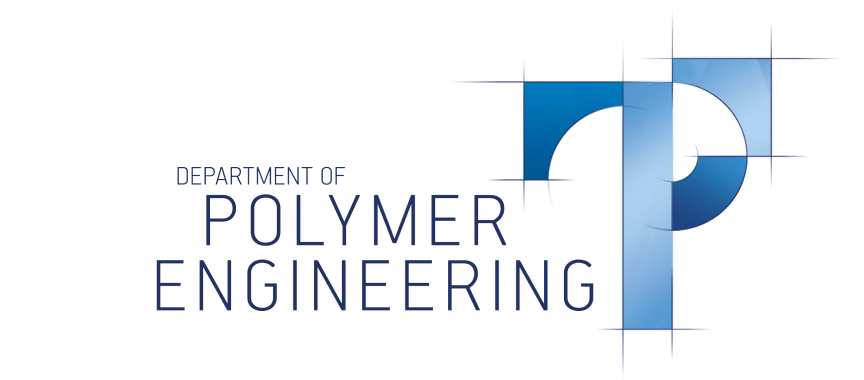Formation of porous structure in paramylon esters via supercritical CO₂
Vol. 19., No.6., Pages 628-635, 2025
DOI: 10.3144/expresspolymlett.2025.47
DOI: 10.3144/expresspolymlett.2025.47
GRAPHICAL ABSTRACT

ABSTRACT
This study demonstrated, for the first time, the successful formation of porous paramylon esters, which were made from euglenoid polysaccharide known as paramylon and short-chain fatty acids, through supercritical CO2 processing. By maintaining a constant ester functional group attached to the paramylon and varying its proportion, distinct porous structures were selectively produced. Solubility parameter estimations indicated that changes in esterification had no significant effect on the solubility of the paramylon esters used in the experiment. Thus, these structural differences are likely attributed to variations in the viscoelastic properties of paramylon esters under supercritical CO2 conditions. Furthermore, thermal conductivity measurements revealed reductions of up to 20%. Intriguingly, substantial decreases in thermal conductivity were observed even at low foaming ratios, achieved through precise control of the porous structure.
RELATED ARTICLES
Wafa Mustafa Saleh, Esam Bashir Yahya, Mardiana Idayu Ahmad, Abdul Khalil H. P. S.
Vol. 19., No.5., Pages 457-469, 2025
DOI: 10.3144/expresspolymlett.2025.34
Vol. 19., No.5., Pages 457-469, 2025
DOI: 10.3144/expresspolymlett.2025.34
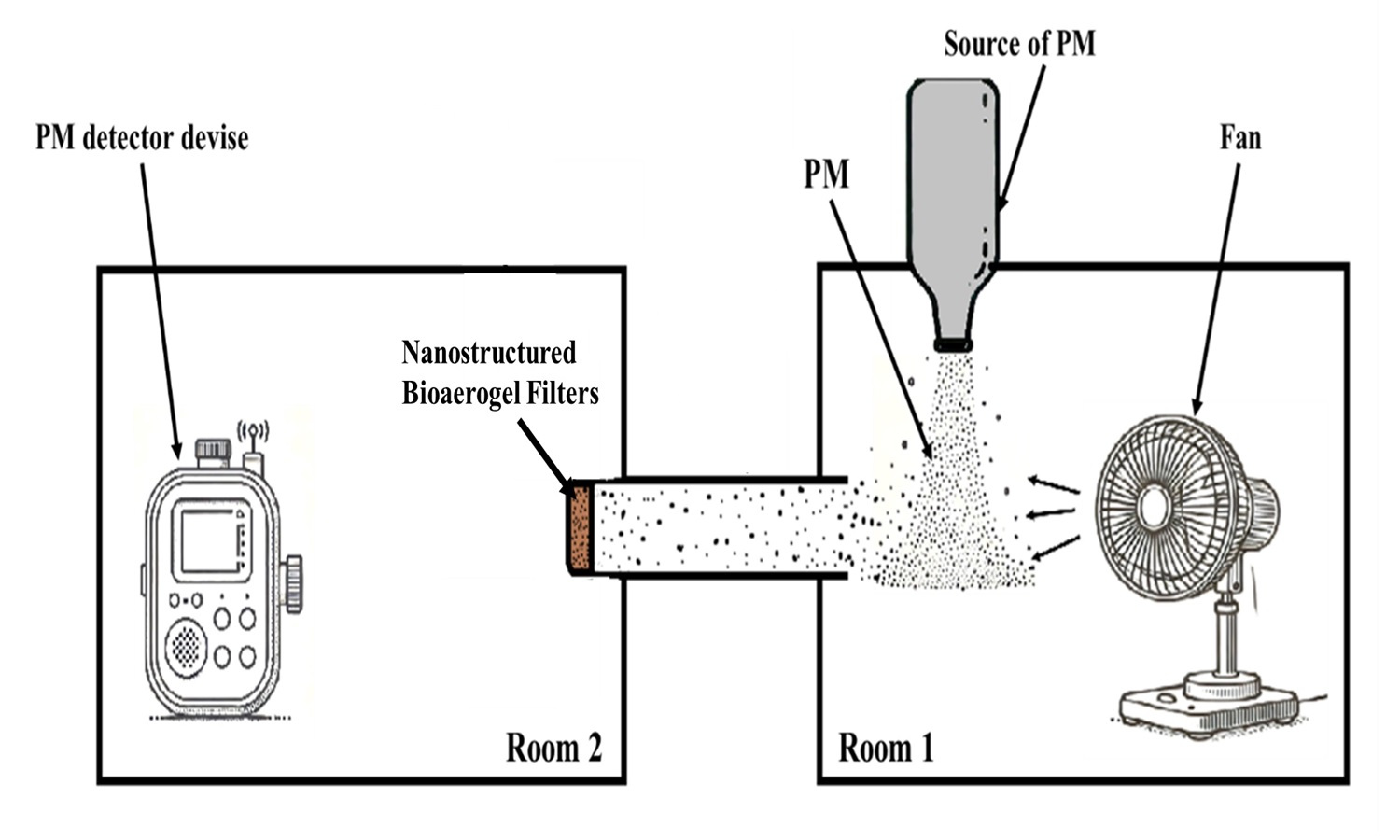
Particulate matter (PM) has been always a significant environmental and public health concern due to its adverse effects on air quality and respiratory health. This study evaluates the efficiency of hydrophobic nanostructured bioaerogels as PM filters under both normal and high-humidity conditions. Bioaerogels were prepared using nanocellulose and chitosan and modified with varying concentrations of tetraethyl orthosilicate (TEMS). At normal humidity, the 3% TEMS-modified bioaerogel demonstrated the highest average PM removal efficiency of 91.6%, attributed to its optimized balance of hydrophobicity, porosity, and mechanical strength. Under high-humidity conditions, the unmodified 0% TEMS bioaerogel exhibited a significant decline in performance due to water absorption, reducing its efficiency by over 15% after prolonged exposure. Conversely, the hydrophobic 3% TEMS bioaerogel maintained its efficiency at 91.4%, highlighting its ability to resist water-induced degradation. This study provide valuable insights into the design of bioaerogel-based filters for realworld applications where variable humidity poses a challenge.
Waleed Y. Rizg, Yonss Mbrook Albadn, Abdul Khalil H.P.S., Majed A Alghamdi, Osama A. Madkhali, Mohammed Baradwan, Fayroz Medhat Shazly, Marwan Marwan, Esam Bashir Yahya
Vol. 19., No.5., Pages 544-553, 2025
DOI: 10.3144/expresspolymlett.2025.40
Vol. 19., No.5., Pages 544-553, 2025
DOI: 10.3144/expresspolymlett.2025.40
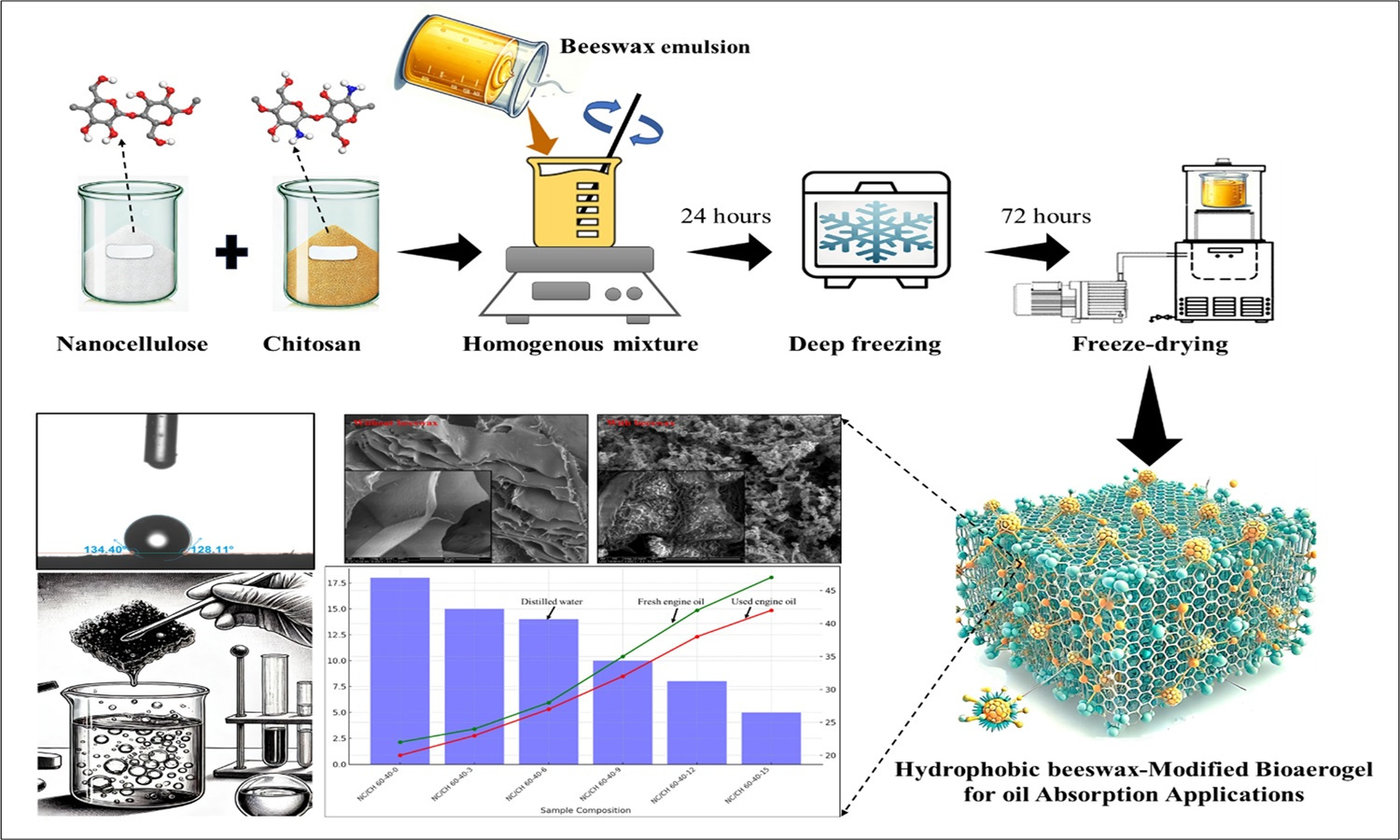
This study presents for the first time a sustainable approach to hydrophobic modification of nanocellulose/chitosan bioaerogels using beeswax emulsion. The incorporation of beeswax into the aerogel matrix resulted in increasing the density from 35.1 to 298 mg/cm3, while the porosity decreased from 96.4 to 62%. Fourier transform infrared spectroscopy (FT-IR) analysis confirmed the successful integration of beeswax into the nanocellulose/chitosan matrix, with distinct peaks corresponding to the characteristic functional groups of beeswax, such as C–H stretching vibrations, further validating the hydro - phobic modification. The mechanical properties showed increased hardness, from 0.24 to 0.95 N/mm2, indicating that higher beeswax content enhanced the rigidity of the aerogels. Contact angle measurements confirmed a dramatic improvement in hydrophobicity, with angles increasing from 47.68 to 134.40 and 128.11° for NC/CH 60-40-15. Water absorption capacity decreased from 17.5 g/g in the control sample to 8 g/g at the highest beeswax concentration, while oil absorption increased significantly, with fresh engine oil absorption rising from 3 to 45 g/g and used engine oil absorption from 2.5 to 40 g/g respectively. These results confirm the successful green modification of bioaerogels using beeswax, providing a sustainable and eco-friendly approach that enhances hydrophobicity, mechanical strength, and selective absorption properties.
Katalin Litauszki, Tamás Tábi, László Mészáros
Vol. 19., No.5., Pages 455-456, 2025
DOI: 10.3144/expresspolymlett.2025.33
Vol. 19., No.5., Pages 455-456, 2025
DOI: 10.3144/expresspolymlett.2025.33
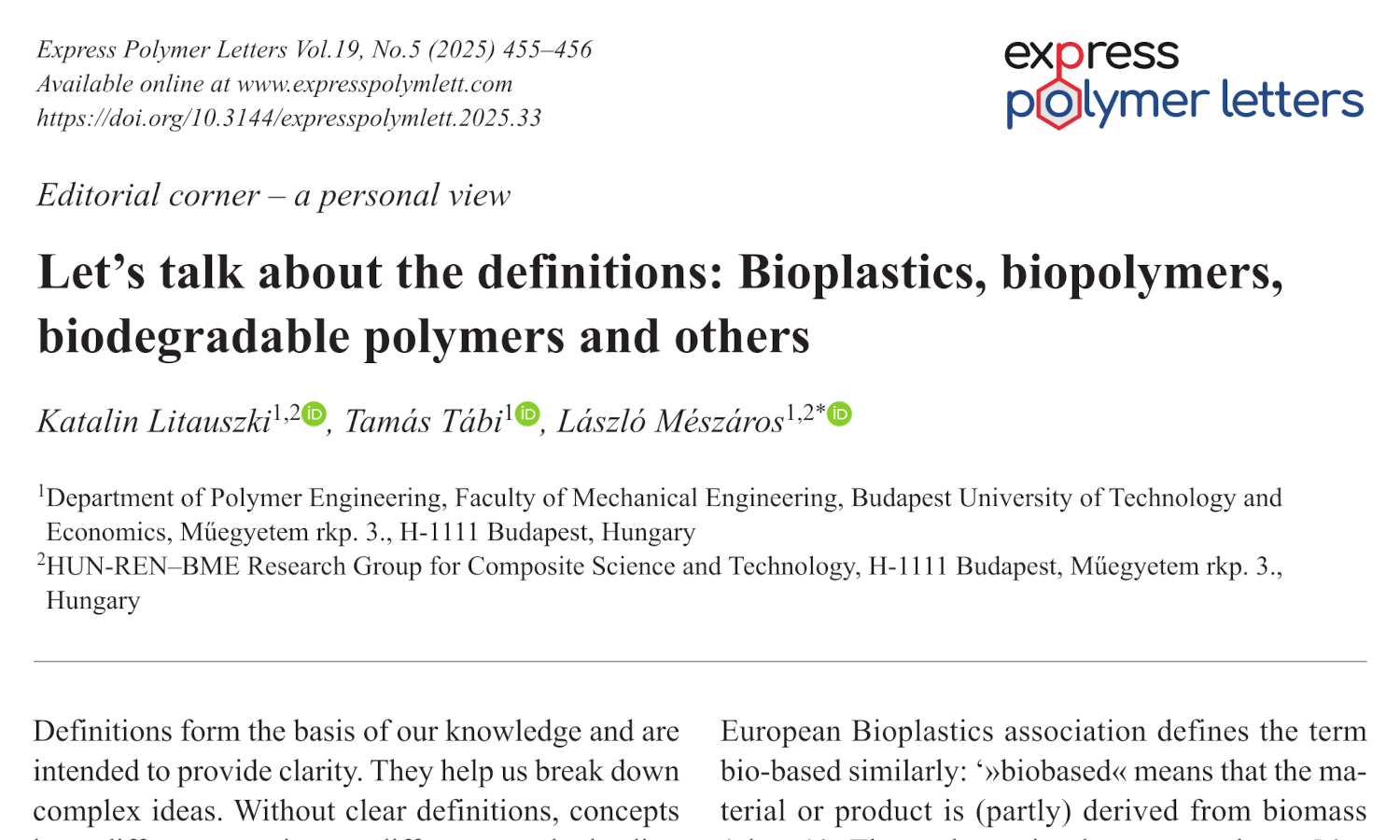
This is an editorial article. It has no abstract.
Konrad Stefaniak, Anna Masek
Vol. 19., No.4., Pages 386-408, 2025
DOI: 10.3144/expresspolymlett.2025.29
Vol. 19., No.4., Pages 386-408, 2025
DOI: 10.3144/expresspolymlett.2025.29
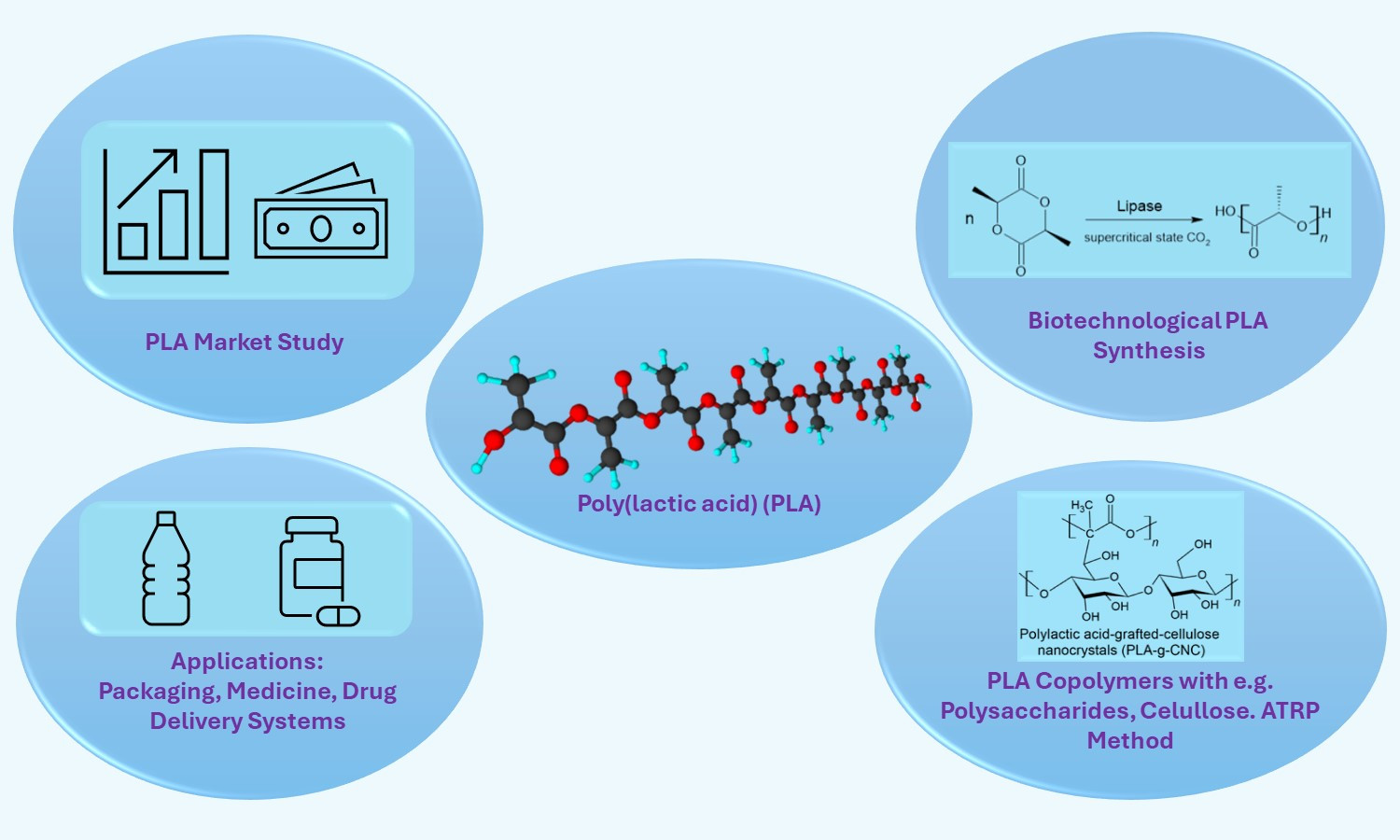
This review is focused on recent achievements in poly(lactic acid) (PLA) synthesis and copolymerization with special regard to biotechnological routes of PLA synthesis, which use bacteria/enzymes (e.g., enzymatic ring opening polymerization (eROP)). Besides PLA, also lactic acid (LA) synthesis is described and an emphasis is put on the biotechnological methods. Having regard to PLA copolymerization, this paper attempts to describe different types of PLA copolymers (such as block copolymers, PLA copolymers with polysaccharides, PLA-cellulose copolymer composites, and PLA polymer brushes). A detailed overview of the recent accomplishments in the field of PLA copolymers is presented. Various enhanced properties and applications of presented PLA copolymers are discussed. The attention is placed mainly on applications in the field of tissue engineering, drug delivery systems, and the packaging sector. Furthermore, a PLA market study and its economic forecast are presented. Eventually possible directions for future research in the field of PLA synthesis and copolymerization are indicated.
Sarahí Bautista Reberte, Esmeralda Zuñiga Aguilar, Solange Ivette Rivera Manrique, Carlos Alberto Martínez-Pérez
Vol. 19., No.3., Pages 326-338, 2025
DOI: 10.3144/expresspolymlett.2025.23
Vol. 19., No.3., Pages 326-338, 2025
DOI: 10.3144/expresspolymlett.2025.23
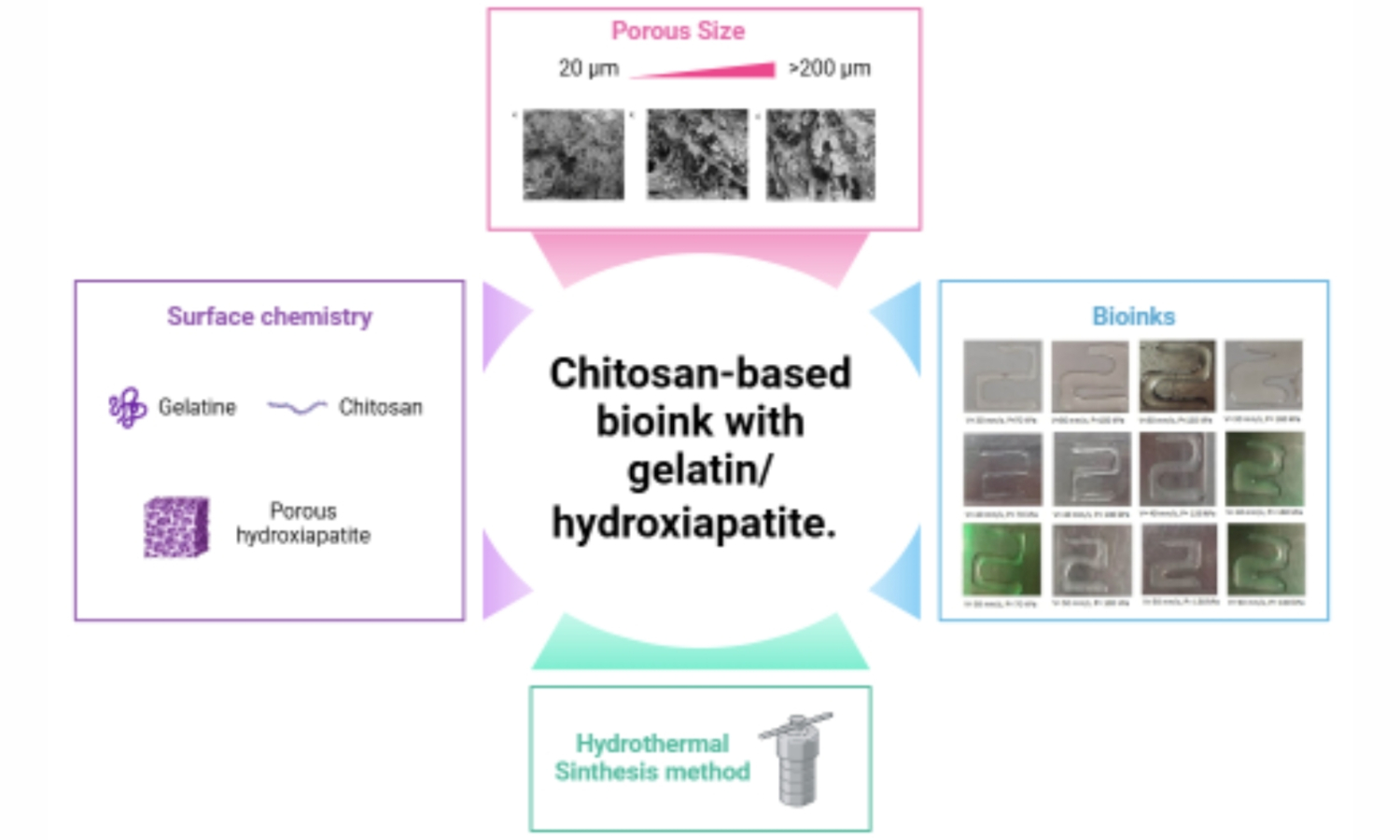
Three-dimensional (3D) bioprinting is a technique currently used for creating tissue engineering scaffolds, using bioinks as the building blocks. These bioinks are composed of biomaterials that provide structural integrity and are synthesized from organic polymers to enhance biocompatibility with the printed constructs. In this study, a series of eleven chitosan-based bioinks were synthesized using the sol-gel technique, employing chitosan of low and medium molecular weight. Three bioink formulations were selected based on their viscosity characteristics and further enriched with gelatin and hydroxyapatite (HA) to enhance their mechanical properties. Characterization tests included Fourier-transform infrared spectroscopy (FTIR), thermogravimetric analysis (TGA), scanning electron microscopy (SEM), and rheological assessments. Viscoelastic materials were obtained, and an experimental model was developed to optimize printing parameters, focusing on pressure and printing speed. Our findings indicate that a bioink formulation comprising a blend of medium and high molecular weight chitosan, supplemented with gelatin and hydroxyapatite, was found to be a promising approach for fabricating scaffolds for bone tissue repair.




